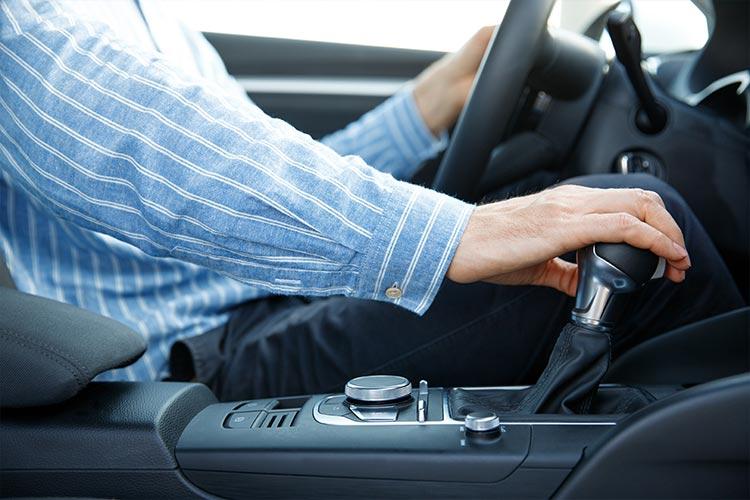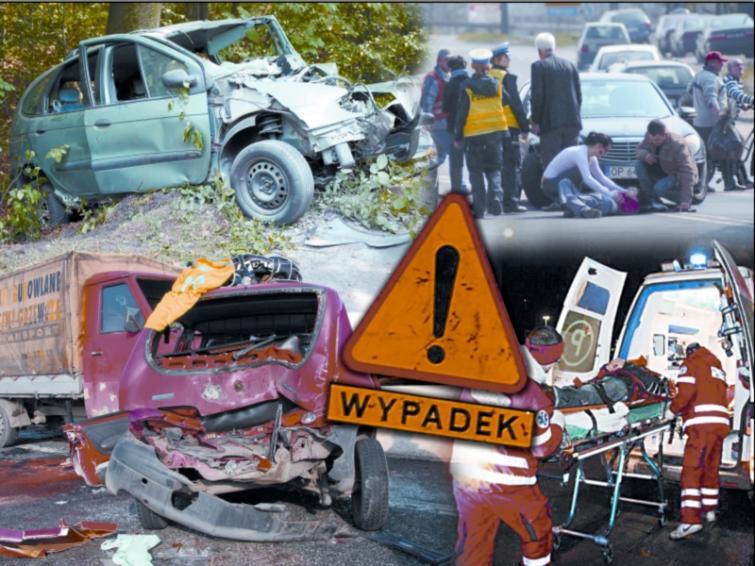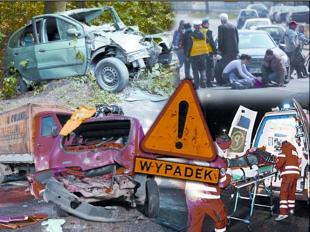
Polish driving, or how drivers break the rules
 Fast, often on double throttle, regardless of the rules. This is the style of a Polish driver. As if he was in a hurry to die. On our roads it is easy to find a gloomy spit.
Fast, often on double throttle, regardless of the rules. This is the style of a Polish driver. As if he was in a hurry to die. On our roads it is easy to find a gloomy spit.

The driver training system is also failing, and the state of the roads is crying out to the heavens for revenge. Our roadsides look like cemeteries - there are so many crosses.
Saturday's tragedy in Szczepanek (Opole Voivodeship), when five people died - all from one Fiat Uno car - is not the only example of how cars often become our coffins.
- This accident is an example of extreme irresponsibility, six people in the car, including one in the trunk. No one has a driver's license, the car is without technical tests. High speed and, finally, a head-on collision. - Shrug his hands junior inspector Jacek Zamorowski, head of the traffic department of the Main Police Department in Opole. – But such behavior on our roads is not unique.
Dear Death
For years, Polish roads have been among the most dangerous in Europe. On average, 100 people die in 11 accidents, while in the European Union 5. According to the Central Statistical Office, between 2000 and 2009, there were 504 road traffic accidents in Poland, in which 598 people died. This is almost 55 percent of the total number of deaths in road accidents in all of united Europe! 286 people were injured. Every day, an average of 14 people died in accidents. It is estimated that material losses due to accidents each year amount to approximately 637 percent of the gross domestic product!
Tragic "victimless weekend"
- Bravado, alcohol, disregard for the rules - says Jacek Zamorowski. “From time to time, the media shows videos from police DVRs installed on unmarked police cars, as road pirates break new records for speed and bottomless stupidity behind the wheel.
Stupidity won't hurt
Mir, on the Opole-Namyslov road. The police did not even have time to write down the BMW license plates that flashed in front of the hood of the police car. The radar showed a speed of 160 km per hour. When the road pirate realizes he's being chased by cops, he decides to lose them in the woods. There, his car got stuck in a swamp. The driver, a 32-year-old resident of the Opolsky district, later explained that it was difficult for him to stop for inspection in a fast car.
Policemen from the Nysa Highway patrolling the road between Bodzanów and Nowy Sventów rub their eyes in surprise. The driver of an Audi races ahead of them on a narrow road at 224 km/h!
224 kilometers per hour - this is the counter of the Pirate's Audi, who stopped near the Neisse
Finally, an example of extreme irresponsibility. In March of this year, a 17-year-old resident of the Namyslovsky district commits 53 offenses, for which he will receive 303 penalty points! But he didn't because... he never had a driver's license. A 17-year-old boy, seeing that the police are giving him a signal to stop, panics and runs against the current at the nearest roundabout. During the attack, he exceeds the speed, boosts priority, overtakes on double continuous, on pedestrian crossings and turns. The police stop him at the blockade on one of the dirt roads.
Attention pirate! He committed 53 offenses on the streets of Namyslov.
“The fines for road piracy in our country are too low,” says Zamorovsky. - 500 zloty fine for playing with death, one's own and someone else's, that's not much. Another example. For drunk driving, the driver receives PLN 800, sometimes PLN 1500 or 2000.
Speeding kills the most common roads
By comparison, in Belgium, for example, overtaking at a ban or running a red light costs up to 2750 euros, in Austria, a speeding ticket can be over 2000 euros, and in Switzerland, driving too fast can cost us more than 400 francs.
Europe followed us
“Don't be offended by me, but Polish roads sometimes feel like being in the Wild West,” says Ralph Meyer, a Dutch truck driver who works with one of the transport companies in Opole. – I will never forget how a car overtook me on one of the hills around Kłodzko. The driver decided on this maneuver, despite the double continuous and curved road. My hair stood on end.
Mayer also noted that Poles speed too often, especially in built-up areas.
Are you a road pirate? - check!
“It’s definitely safer with us,” he says.
These words are confirmed by Stanislav Kozlovsky, a former racer, and today an activist of the Opole Automobile Club.
“It is enough to cross our western border, and another culture of driving is already visible,” he says. - In Hamburg, where my children live, there are no problems with entering a traffic jam. Someone will always let you in. With us - from the holidays. If there is a 40 km/h limit in Germany, Austria or the Netherlands, no one exceeds this speed. For us, this is unthinkable. The one who obeys the signs is considered a stumbling block.
Kozlovsky draws attention to something else.
“In the West, drivers keep a considerable distance from the car in front, in our case one tails each other,” he says. - It's a game of fate.
This is confirmed by police statistics. Last year in Opolsky Uyezd, non-observance of the distance caused 857 accidents and collisions, forced passage along the right of way caused 563 such accidents, and only in third place was speeding - the cause of 421 accidents. and collisions.
Mistakes in learning
“During a driving course and an exam, the ability to park is equally important than driving in the city, outside it or in more difficult weather conditions,” says Paweł Dytko, one of the best Polish rally and racing drivers. - After all, no one died during the execution of the bay, and in the usual movement.
Miraculously, she managed to avoid a head-on collision with a truck.
These words are confirmed by the head of the Opole road service:
“Many of us believe that it is enough to get a piece of plastic called a driver's license, and you are already a great driver,” says Jacek Zamorowski. “You can't learn that in a course. To practice driving, you need to drive several tens of thousands of kilometers.
According to Dytka, following the example of Western countries, every new driver must undergo additional training at least once a year at the center for improving driving technique.
“The skid mat shows how the car behaves when it loses traction, this is where we learn to recover from a skid and respond correctly in extreme situations,” says the rally driver.
Today, to obtain a driver's license, it is enough to complete a 30-hour theoretical course and the same duration of practical training at any driver training center. After that, the driver candidate must pass an exam. In the theoretical part, solves the test on knowledge of the rules of the road. From a practical point of view, he must first prove his skills on the maneuvering platform, and then he goes to the city. According to the Supreme Audit Office of Poland, the average rate of those tested the first time does not exceed 50%. This is a very bad result.
However, there is light in the tunnel, which will make the roads safer: - From 2013, every new driver in the period from the fourth to the eighth month of obtaining a driver's license will have to take an additional theoretical and practical course, incl. on a sliding mat,” explains Edward Kinder, director of the Provincial Traffic Center in Opole.
Expensive is also a problem.
Officials of the Supreme Audit Office found another reason for so many fatal accidents in Poland - the terrible state of the roads. The conclusion of the latest audit, which covered the years 2000-2010, is that a radical improvement in safety can only occur after the construction of a network of motorways and expressways, and half of Poland's roads are subject to immediate closure.
“The process of improving road safety is so slow that Poland is not only far behind the European average, but probably will not even reach national safety thresholds,” explains Zbigniew Matwei from the Supreme Audit Office.
Every second kilometer of public roads has ruts more than 2 cm deep, and every fourth kilometer - more than 3 cm. In the EU countries, such roads are excluded from traffic for safety reasons. In Poland, this will lead to the closure of almost half of the roads.
But according to the police, you can not throw all the troubles on the roads.
“It is enough to drive in accordance with the regulations, observe the speed limit, do not overtake on a double continuum, and we will continue, even through pits with pits,” says Jacek Zamorowski.
You don't know if you will return
Every death is a tragedy. Also, when only road pirates who have prepared such a fate for themselves die. Innocent people also die because of the extreme stupidity of others. In fact - when we leave or leave the house - we can never be sure that we will return there.
Chasing a drunken road pirate in Ostrovets
In mid-June, Poland was shaken by an accident on the national road No. 5 near Leszno. At high speed, a Volkswagen Passat driven by a 25-year-old man crashed into an Opel Vectra in which a family of five was traveling. All Opel drivers died, including two children of four and six years old. The driver of the Passat was hospitalized.
In turn, the applicant for personnel Dariusz Krzewski, deputy head of the traffic department of the Main Department of the Municipal Police in Opole, will never forget the accident that occurred several years ago in the vicinity of Turava. A drunk driver hit a couple returning from a festival. The perpetrator fled the scene. The police found him at his home.
“But I had to notify the family,” says Krzhevsky. “So, we went to the address listed in the records of the victims. - The door was opened by a sixteen-year-old boy, then his younger brother for two years came up to us, and at the end a sleepy three-year-old kid came out, who was still rubbing his eyes. I had to tell them that their parents were dead.
Slavomir Dragula
